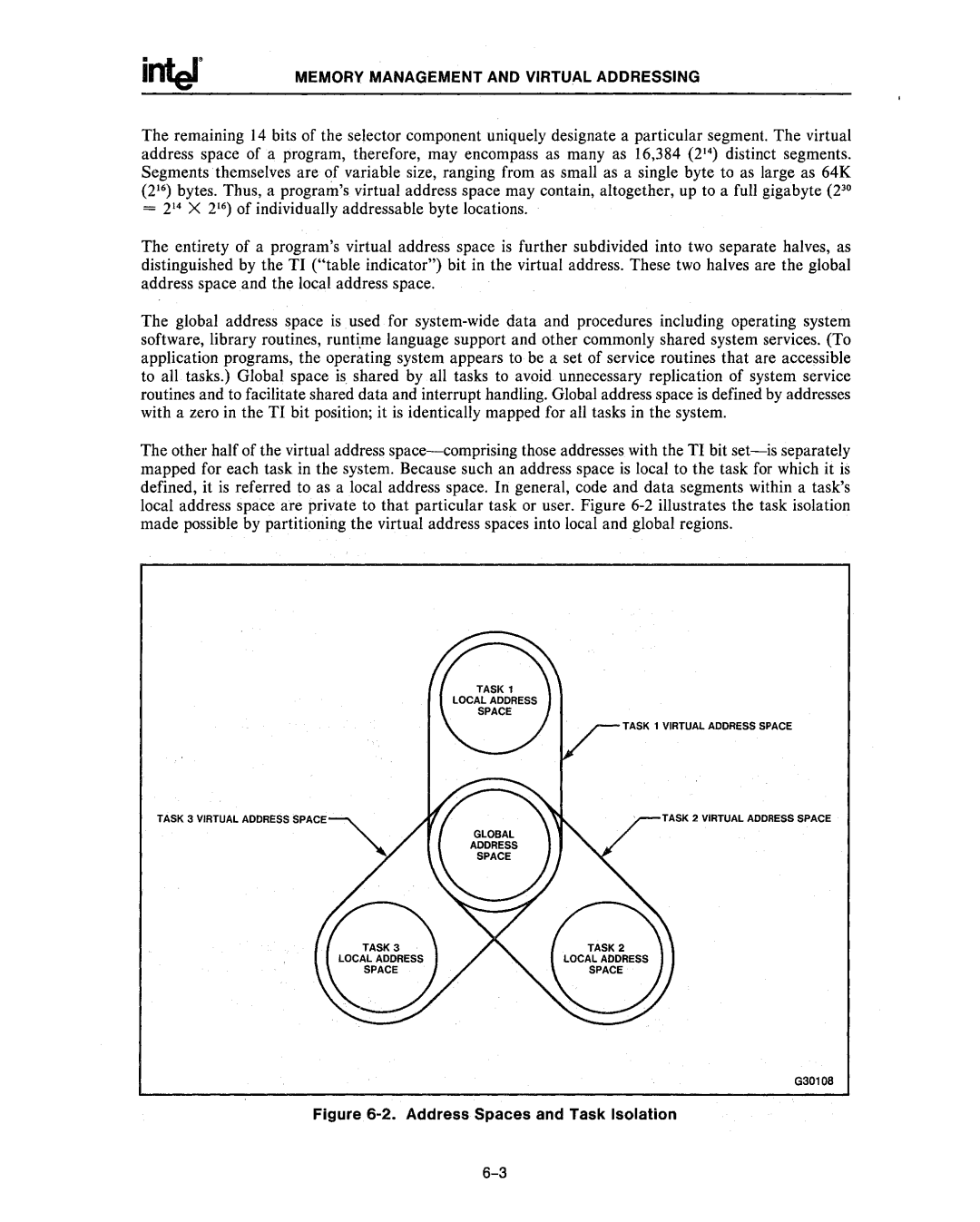
MEMORY MANAGEMENT AND VIRTUAL ADDRESSING
The remaining 14 bits of the selector component uniquely designate a particular segment. The virtual address space of a program, therefore, may encompass as many as 16,384 (214) distinct segments. Segments themselves are of variable size, ranging from as small as a single byte to as large as 64K (2 16) bytes. Thus, a program's virtual address space may contain, altogether, up to a full gigabyte (2'0
=214 X 216) of individually addressable byte locations.
The entirety of a program's virtual address space is further subdivided into two separate halves, as distinguished by the TI ("table indicator") bit in the virtual address. These two halves are the global address space and the local address space.
The global address space is used for
The other half of the virtual address
TASK 1 VIRTUAL ADDRESS SPACE
TASK 3 VIRTUAL ADDRESS SPACE~ | TASK 2 VIRTUAL ADDRESS SPACE |
G30108
